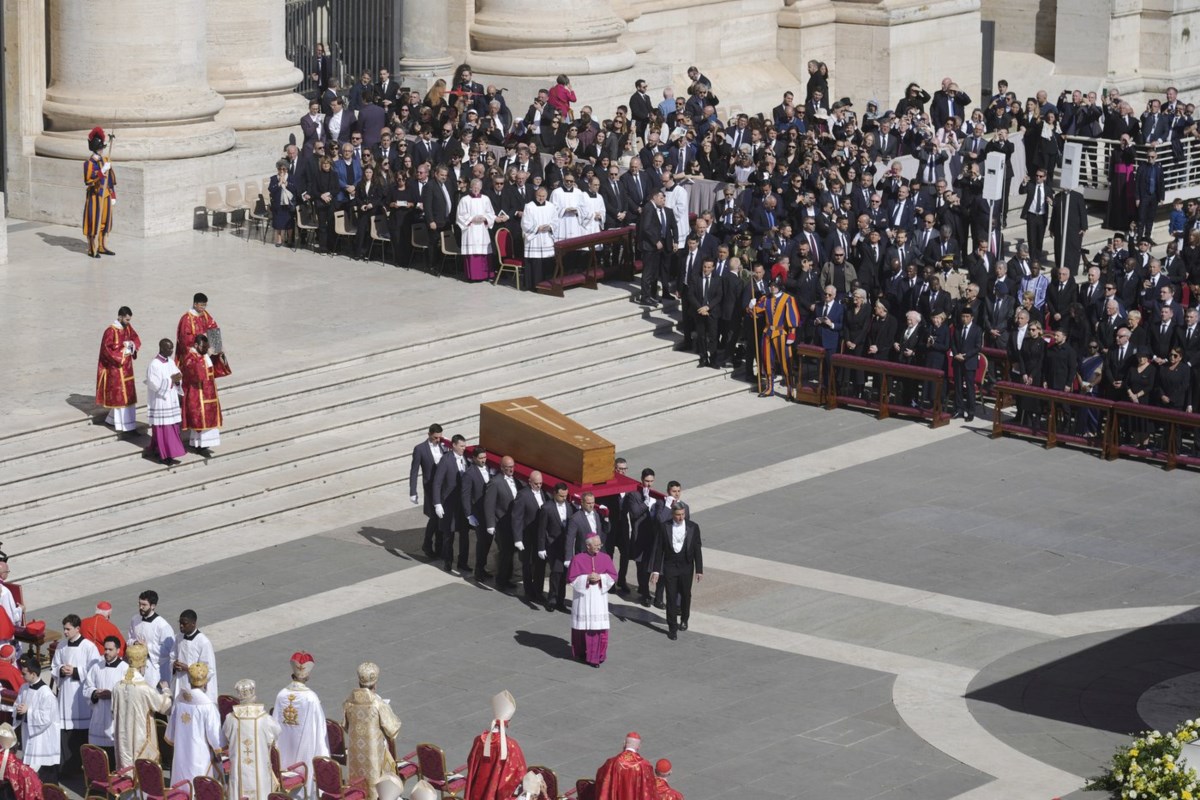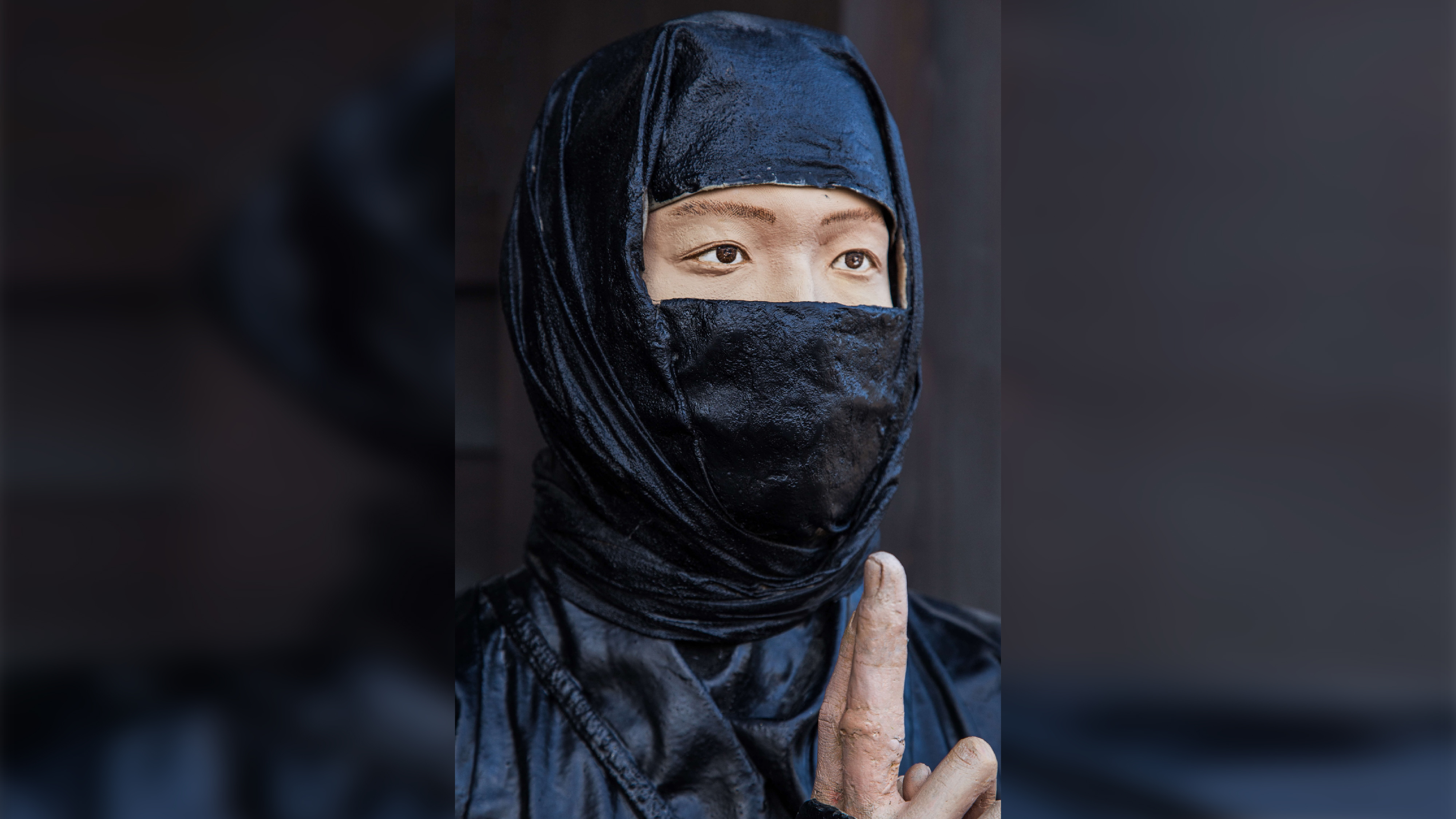Wedded to charity: The Catholic sisters of St. Louis and their work in 1888

In 1888, a Post-Dispatch article highlighted the work of several of the Catholic orders in St. Louis: Fifteen Roman Catholic Sisterhoods are to be found in St. Louis engaged in charitable work. There are under the charge of these sisterhoods, not counting parochial schools, 38 separate institutions designed for the care of the sick, indigent, ignorant and insane. In this work 715 women who have vowed to be poor, chaste and obedient unto death. The work they do cannot be even suggested by figures, but that they do a work great in its intent and valuable in its results cannot be denied. The Sisters of St. Joseph of Carondelet is almost a St. Louis order. Having an European foundation the order was first introduced in this country in this diocese under Bishop Rosati. The order's first six sisters arrived in St. Louis in 1836. The mother house of the order is at Carondelet. There are a 45 professed sisters, 44 novices, 15 postulants and 110 pupils. The order also has a deaf and dumb institute for girls at 1849 Cass avenue. This school is now St. Joseph Institute for the Deaf. At Fifteenth and Clark avenue it has a male orphanage. St. Vincent's German Male and Female Orphanage, on Hogan street, between O'Fallon street and Cass avenue has 150 orphans. At Tenth and Sydney streets are two unique features: the home of the Immaculate Conception, a home for unemployed girls while seeking employment, and girls without homes are taken to board. In' one wing of the building is a creche or nursery for infants whose mothers are compelled to go out to work during the day. In addition to the works here enumerated the Sisters of St. Joseph teach in the parish schools connected with the following churches: Sts. Mary and Joseph (girls) (was at 5304-6304 Minnesota, the parish closed in 2005), St. Vincent's (girls), St. Bridget's (girls) (was at 2401 Carr; merged with another parish in 2003), St. Patrick's (girls and boys) (was at Sixth and Biddle, closed in 1973), St. Lawrence O'Toole's (girls) (at 14th and O'Fallon, closed in 1948), St. Theresa's (girls) (May be referring to St. Teresa of Avila, which merged with another parish in 2003) and St. John's (boys and girls) (May be St. John Nepomuk on South 11th or St. John the Apostle and Evangelist north of downtown). And yet that order does not monopolize the work done in the city. The Sisters of Charity have their full share to do. The principal house of this order is at the Academy of St. Vincent, Lucas and Grand avenues. It is a rule of this institution that 12 children are always to be educated without pay. The Sisters Hospital, as the institution at Montgomery and Bacon streets is popularly known, belongs to this order. The House of the Angel Guardian at Tenth and Marion streets is an industrial school for girls. There are 70 pupils in this school being taught all the useful accomplishments of women. Far from being the least of the enterprises of the Sisters of Charity is the institution at 1236 North Tenth street. It is a widows' home, a lying-in hospital and a foundling asylum. On the same block, but facing on Biddle street at the corner of Tenth street, is St. Mary's Orphan Asylum, one of the largest asylums in the city. St. Philomena Industrial and Day School at Clark and Ewing avenues is another branch of the work pursued by this sisterhood. Last and best known of all its work is that at St. Vincent's Insane Asylum, a magnificently conducted institution. (The large building in Normandy that housed the asylum was built in 1895; this article refers to the asylum at Ninth and Marion.) The convent of that remarkable order Sisters of Mercy is at Twenty-second and Morgan streets. Mother Mary M. di Pazzi there presides over a community of 40. Attached to the convent is St. John's Hospital and to that is attached the Missouri Medical College. In addition the sisters maintain a free dispensary, a House of Mercy and Industrial School, a female employment office, a female night refuge, and a small orphanage. It is not intended that the order shall have charge of an orphan asylum but the sisters in going about among the sick have picked up a number of girls without home or friends and have adopted them. Another departure from the recognized objects of the order is the assignment of several sisters from the community to teach in the school of St. Cronan's Parish, near Tower Grove, made necessary by a lack of other teachers. The sisters visit the poor and sick in their own homes and go to the City Jail regularly — not for the purpose of proselyting but to give what comfort and assistance they can to the inmates. Though very wide spread in the United States, the Ladies of the Sacred Heart are more prosperous in St Louis than in any other part of the country, This order comes from France. All of its members retain the names they bore in the world with the prefix Madame. The mother house is in South St. Louis at what is called Maryville. There is an academy and convent with 80 sisters and 115 boarders under Mme. O'Meara's charge. Mme. Spalding has charge of the house at Broadway and Convent street, where there are 27 sisters, 65 pupils and 20 orphans. The last item has a history. Sixty years ago there was a small community of Sacred Heart religious in the Florissant Valley. This was the only sisterhood Bryan Mullanphy knew anything about, and he knew of it because all of his intimate friends lived in that valley. He was struck with the idea that St. Louis would need at some future time an orphan asylum, and he proposed to found one. He had a farm — bounded roughly by Mill Creek, the river, Seventh street and Rutger street. Those streets did not exist in those days, but the creek did. He made an agreement with the Ladies of the Sacred Heart, under which they were to take this farm and use it for their benefit and to pay for the care and education of 20 orphan girls. The farm could never be sold by the order under this agreement. The city grew down to the farm and about it, and the order seeing how valuable their property was become sold their Florissant convent to the Sisters of Loretto and built a new convent on Broadway, between LaSalle and Convent streets. They leased the other land for poor prices on good terms to lessees. The Annunciation Church, parsonage and school are on leased ground, and all of the houses within the limits of the Mullanphy farm pay annual tribute to the Sacred Heart. It was this that made the erection of the convent at Maryville possible, and makes the order so prosperous in St. Louis. Nowhere else in the world have the Ladies of the Sacred Heart charge of an orphanage. The ladies teach the girls of the Annunciation and boys and girls at St. Thomas Aquinas schools. The Loretto sisters are much similar to the Sacred Heart in object. They are teachers exclusively. Their mother house is in Kentucky and their chief academy is at Florissant, but they have a successfully managed academy at Pine street and Jefferson avenue. There are 22 sisters and 150 pupils. The sisters also teach in parochial schools attached to St. Michael's (girls) (closed in 1975, was at 2101 North 11th), Visitation (boys and girls) and Cathedral (boys and girls). Another purely educational sisterhood is the sisterhood of the Visitation — at least that is the work they do in this diocese. The convent and academy of this order, on Cass avenue and Twentieth street, is well known. It is under the care of Mother Mary Aimie. The community numbers 59 and pupils 115. A branch house has recently been established in what was the McPherson house, 4000 Washington Avenue, where there is a very successful day school. St. Elizabeth's Institute is in charge of Sister Camilla and six sisters of the Precious Blood, the only representatives of that order in St. Louis. The institute is on Arsenal street between Gravois road and Grand avenue, and is for the training of young women of education to be practical as well as ornamental housekeepers. It is chiefly German in membership. (St. Elizabeth Academy closed in 2013.) The mother house of the Ursuline nuns is the convent and academy on State street and Russell avenue. The house contains 47 members of the community, 15 novices and 50 boarders. A day school is attached. The sisters do not teach in the city parishes, but it is their custom to go into small, weak parishes in the country districts of the diocese in bands of three to two nuns and a lay sister to teach. The Sisters of Notre Dame in St. Louis confine themselves to teaching. Their house is at the northeast corner of Cook and Grand avenues. There are 18 sisters there. The Carmelite nuns, whose house is at Second Carondelet avenue and Victor street, are the only strictly cloistered nuns in St. Louis. Mother Mary Gabriel is the Superioress. There are but 13 nuns in the community and no community of the order is permitted to have more. There are but three communities of the order in the country, one at Baltimore, one at New Orleans and the one here. The members give themselves up to fasting and prayer. They are required to have a dowry sufficiently large to insure the order against their being a burden on it, and great sacrifices are required of candidates. There is one order in this city which is known by a name other than its proper title. St. Mary's Sisters, as the religious are called who inhabit the convent under the wing of St. Mary's Church, Gratiot street, near Third street, are in reality Servants of the Divine Heart. Their work is to visit the sick in their homes and nurse them. Though it is not customary in the order to have an infirmary for men and women in St. Louis, located on Papin, near 16th Street. At one time women about to be confined were admitted to this infirmary, but latterly a rule has been made against such admissions. Sisters of the order nurse the inmates of the Missouri Pacific Hospital, at California and Lafayette avenues. The mother house of the Sisters of St. Francis (known as the Brown Franciscans) is at 14th and O'Fallon streets. There are 12 sisters, seven novices and seven candidates. The order maintains the Pius Hospital and an asylum for females out of employment. Nowhere is there are more beautiful charity than at the Home for the Aged at 2209 Hebert street, maintained by 16 Little Sisters of the Poor. There are in that home 250 old people. The conditions for admission are the candidate must be 60 years of age or over, must be absolutely without money or friends. The home has no endowment, and is maintained wholly by contributions of money, provisions and clothing, which the sisters solicit from day to day. Whatever they have the best is given to their wards and what is left the sisters may divide. (The sisters ran a nursing home in north St. Louis until 2018.) The Sisters of the Good Shepherd do work neglected by all other charitable associations — reclaiming fallen women at the House of the Good Shepherd on 17th street, between Pine and Chestnut streets. There are three divisions in the community. The first is made up of the religious of the order; second, Magdalenes — women who fell in their struggle in the world, and doubting their own strength, prefer to remain as serving sisters out of the reach of temptation; third, the penitents. Then there is a class of preservation made up of girls of all ages, placed in the home by parents or guardians to keep them out of harms way. The community of religious number 80, the Magdalenes 64, the penitents 180 and the children 160. Each one of these is kept constantly employed doing all manner of household work. An industrial school at Normandy occupies seven religious of this order in purely educational work. The only house of the Oblates of Mary, a sisterhood of colored women, west of Baltimore, is on Morgan street, near 13th. There are five sisters in this house and several novices. Besides teaching in a parish school, these sisters maintain a colored orphan asylum. Recently they purchased the roadhouse at Page and Taylor avenues, known as the Mansion House, and will open a school there in the spring. This article has been edited for length.


















